COVID-19 research at Rockefeller
Rockefeller research directly related to the basic biology, pathophysiology, prevention, and treatment of COVID-19 is underway in more than 25 laboratories. The projects range from near-term efforts to prevent infection in front-line health care workers and reduce the severity of symptoms in vulnerable populations to longer-term strategies to develop therapeutics and vaccines. The scientists leading these projects are collaborating within Rockefeller and across the scientific community to make rapid progress. Rockefeller’s on-site research hospital is also playing a critical role.
These are the faculty members whose labs are conducting COVID-19-related research:
Strategy for immediate deployment
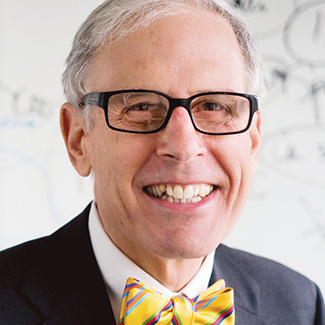
Barry S. Coller, M.D.
Barry Coller, Physician-in-Chief of The Rockefeller University Hospital, is leading immediate efforts to develop and test the efficacy of plasma and antibodies taken from recovered COVID-19 patients to stop progression in the critically ill and prevent infection in people at high risk such as frontline healthcare workers who have frequent exposure. Rockefeller will apply technologies they have pioneered to purify the genes that encode potent anti-SARS-CoV-2 antibodies, providing a permanent resource that can treat and prevent infection. This funding supports the establishment of a robust infrastructure in NYC to screen and recruit patients, collect plasma and immune cells, and test the efficacy of immune therapies, done in partnership with the New York Blood Center and other leading New York institutions.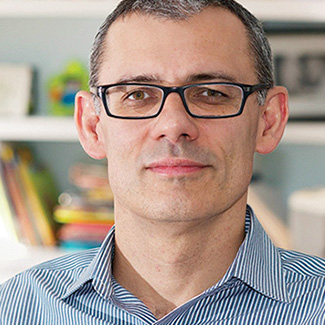

Paul Bieniasz, Ph.D. and Theodora Hatziioannou, Ph.D.
ASSESSING POTENCY OF MONOCLONAL ANTIBODIES AND CONVALESCENT PLASMA FOR NEAR-TERM PROPHYLAXIS AND TREATMENT
Antibodies made by recovered patients can be used to neutralize the virus in other people, either by transferring donated plasma directly to infected patients or through the creation of monoclonal antibodies. Virologists Paul Bieniasz and Theodora Hatziioannou have developed a simplified and rapid method to assess the neutralizing capacity of both plasma samples and individual antibodies found in the plasma. The team has created a mock SARS-CoV-2 virus for research purposes, allowing them to safely test such antibodies without the complications and precautions needed when working with highly infectious agents. Using this method, the team is now studying and characterizing the antibody response to SARS-CoV-2 and its evolution post-infection to better understand the course of coronavirus disease and the development of immunity.
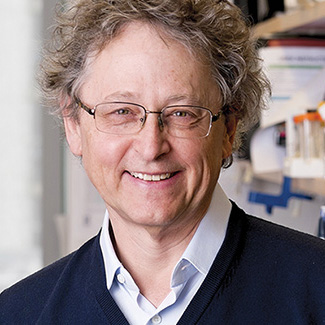
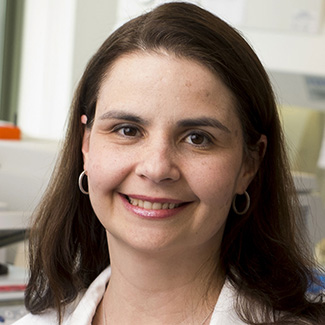
Michel C. Nussenzweig, M.D., Ph.D. and Marina Caskey, M.D.
DEVELOPMENT OF HIGHLY POTENT MONOCLONAL ANTIBODIES FOR PROPHYLAXIS AND TREATMENT
Immunologist Michel Nussenzweig, physician-scientist Marina Caskey, and their colleagues have pioneered a robust method to isolate and clone broadly neutralizing antibodies (bNAbs) from people who have successfully fought viral infections, such as HIV. Shortly after the emergence of the SARS-CoV-2 virus in early 2020, the group adapted this powerful approach to COVID-19, producing highly potent monoclonal antibodies from the purified plasma of recovered patients. These antibodies protect cells from infection with SARS-CoV-2 by binding to the receptor-binding domain of the viral Spike protein. Clinical trials to test their safety and efficacy in COVID-19 patients began in January.
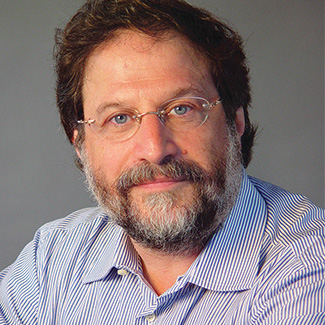
Jeffrey V. Ravetch, M.D., Ph.D.
OPTIMIZATION OF ANTIBODIES
Immunologist Jeffrey Ravetch studies Fc receptors, antibody-binding molecules that are crucial to triggering an immune response and to stopping it once a threat has been neutralized. He will study antibodies made by people who have been infected with SARS-CoV-2 to determine which Fc variants are best capable of eliminating virus.
Robert B. Darnell, M.D., Ph.D.
RAPID SCREENING TESTS FOR SARS-COV-2
Physician-scientist Bob Darnell is working on new methods to rapidly diagnose infection and develop a model by which patients could do simple at-home sample collection. The rapid testing can be implemented in weeks, which will also be important for quickly identifying members of the local workforce who have acquired infection and preventing spread.
Thomas Tuschl, Ph.D.
IDENTIFYING THOSE NO LONGER AT RISK OF COVID-19
Biochemist Tom Tuschl is seeking to develop a rapid and sensitive blood-drop antibody test to determine who has been exposed to the virus. This will be important for assessing and following the health of the population, and will be critical in ascertaining who is no longer at risk of becoming infected or spreading the disease—crucial information for sustaining the workforce in health care facilities.
Thomas P. Sakmar, M.D., Ph.D.
UNDERSTANDING THE COURSE OF SARS-COV-2 INFECTION
Biochemist and physician Tom Sakmar is developing a coronavirus calendar, which starts with people who report symptoms and provide a saliva sample every day for up to 90 days. At the end of the evaluation period, the saliva samples can be assayed for presence of viral RNA. These studies will provide critical information about how the infection begins and propagates through the population.

Michael P. Rout, Ph.D., and Brian T. Chait, D.Phil.
NANOBODIES FOR PREVENTION AND TREATMENT OF COVID-19
Nanobodies are a novel class of small antibody-like molecules. Because of their size and simplicity, they can be manufactured at low cost, have high stability, low immunogenicity, and can be of very high affinity, making them excellent candidates for therapeutics and diagnostics. They also have utility for rapid point-of-care diagnostics. Structural biologist Michael Rout and chemist Brian Chait are pursuing the development of potently neutralizing nanobodies that bind to different sites on the virus.
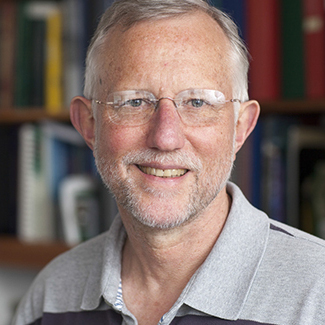

Charles M. Rice, Ph.D., and Fraser Glickman, M.S.P.H., Ph.D.
REPURPOSING DRUGS
In the near term, virologist Charlie Rice, who won the Lasker Award for developing the methods that enabled high throughput screens that led to the cure for Hepatitis C, is developing related high-throughput assays to screen for new inhibitors of SARS-CoV-2 replication. He is collaborating with Fraser Glickman, who directs the university’s High Throughput and Spectroscopy Resource Center, and has assembled a large collection of registered drugs from around the world that have been safe in humans but have not been registered for any therapy. Success with any of these would have a rapid route to FDA approval and clinical use.
Jean-Laurent Casanova, M.D., Ph.D.
NEW THERAPEUTIC TARGETS REVEALED BY GENETICS
Jean-Laurent Casanova is a human geneticist whose research over the past two decades has shown that unusual susceptibility to certain infectious diseases, such as tuberculosis and influenza, can be traced to single-gene mutations that affect an individual’s immune response. To identify similar host factors that may be responsible for unexpectedly severe cases of COVID-19, Casanova is co-leading an international consortium to collect and analyze DNA samples from severely ill patients, looking for genetic differences that distinguish them from those who have recovered quickly. The team has so far found a subset of severe cases in which genetic mutations have resulted in faulty Type 1 interferons, proteins crucial for host defense, and another group with misguided antibodies attacking Type 1 interferons.
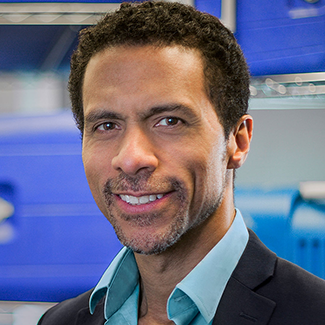
Erich D. Jarvis, Ph.D.
The genomes of bats may hold clues about the exceptional immunity of these animals to coronaviruses, potentially revealing weaknesses in the human immune response to infection. Erich D. Jarvis and his colleagues are using high-precision sequencing techniques to acquire genetic data on multiple species of bats. They aim to identify structural differences in the ACE2 receptor, used by coronaviruses to infect host cells, and investigate antiviral defenses that are present in bats but missing from the human immune system.

Sean F. Brady, Ph.D.
IDENTIFICATION OF NEW LEADS FOR THERAPEUTICS: RNA-DEPENDENT RNA POLYMERASE.
Chemist Sean Brady has pioneered the discovery of novel antibiotics made by bacteria in soil, using novel methods that do not require the isolation and culture of these bacteria. He has extended this work to the human microbiome, where he has shown that there are many novel nucleosides that are likely involved in inhibition of RNA and DNA polymerases made by different bacteria and viruses. These provide a large untapped source for identifying new leads for a potent and specific inhibitor of the SARS-CoV-2 RNA polymerase.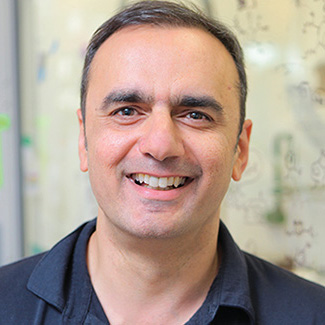
Tarun Kapoor, Ph.D.
IDENTIFICATION OF NEW LEADS FOR THERAPEUTICS: HELICASE
SARS-CoV-2 has an essential helicase that is required for unwinding double-stranded RNA templates during viral replication. It is likely that inhibitors of this enzyme can be found that are specific for the virus without effects on human proteins. Tarun Kapoor is an exceptional chemical biologist with extensive experience on this class of molecule. He will collaborate with Charlie Rice to identify novel compounds that inhibit the SARS-CoV-2 helicase that can be taken into the clinic.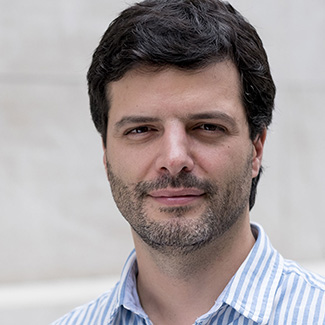
Gabriel D. Victora, Ph.D.
NEW ANIMAL MODELS FOR TESTING
Immunologist Gabriel Victora will use his expertise in CRISPR technology to make the mouse ACE2 receptor—where the SARS-CoV-2 virus attaches—identical to its human counterpart. This has the potential to be an ideal model, enabling the next step in advancing drug candidates toward clinical testing. Gabriel will also characterize how antibodies that prevent SARS-CoV-2 infection act, focusing on mapping where they bind, and identifying antibodies that might be potent combinations for therapy and prevention.
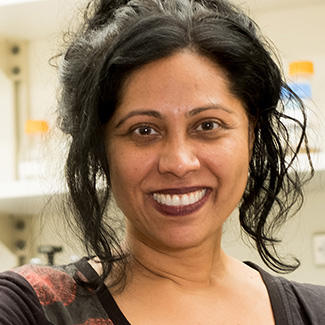
Seth A. Darst, Ph.D., Elizabeth Campbell, Ph.D.
BASIC SCIENCE TO DESIGN BETTER DRUGS
Structural biologists Seth Darst and Elizabeth Campbell are experts in determining the structure of RNA polymerase complexes bound to the templates that they copy. The SARS-CoV-2 RNA polymerase is essential for viral replication and is a prime target for drug treatment. In collaboration with biochemist Brian Chait, the team has determined the structure of the proteins comprising the SARS-CoV-2’s replication machinery—enabling studies of how existing inhibitors may bind and inhibit the viral RNA polymerase enzyme. This knowledge may lead to modifications that would allow current inhibitors to work specifically for SARS-CoV-2.
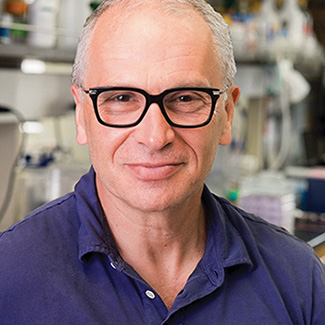
Alexander Tarakhovsky, M.D., Ph.D.
Immunologist Sasha Tarakhovsky is studying the role of SARS-CoV-2 Nucleocapsid Phosphoprotein on virus-induced cell death in infected cells. He has identified the likely viral protein responsible for this effect and is working to understand the mechanism, with a goal of finding ways to prevent its re-occurrence.
Ali H. Brivanlou, Ph.D.
SYNTHETIC HUMAN LUNGS PLATFORM TO STUDY SARS-COV-2 INFECTION
The rational design of COVID-19 therapies will require understanding the life cycle of the virus as it infects human lung cells. In collaboration with virologist Charles Rice, stem cell biologist Ali Brivanlou and his team have, for the first time, generated three-dimensional, self-organized human lung tissue on microchips. These standardized synthetic human “lungs” can be infected with SARS-CoV-2 virus variants and visualized using a variety of reporters. The invisible enemy is now finally visible. The study uses sophisticated molecular imaging and artificial intelligence approaches to gain a basic knowledge for the virus’s behavior, a required step for the design of biological or chemical treatments for COVID-19.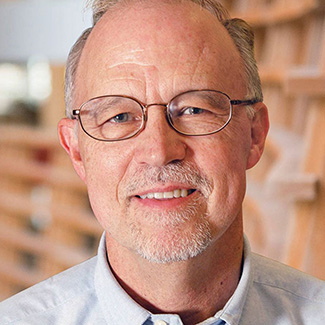
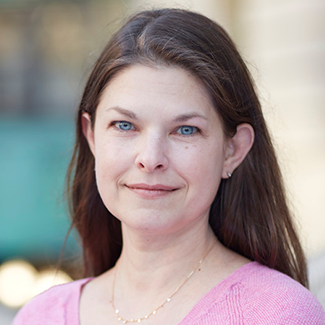
Sidney Strickland, Ph.D. and Erin Norris, Ph.D.
BLOOD CLOTTING COMPLICATIONS IN COVID-19
Many seriously ill COVID-19 patients have increased blood clotting, which can lead to heart attacks and strokes, and is potentially fatal. Neuroscientists Sidney Strickland and Erin Norris, and their colleagues, have conducted extensive research on blood clotting in the context of neurodegenerative diseases. They are now applying their expertise to investigate the mechanisms that lead to abnormal blood clotting after SARS-CoV-2 infection. The ability to inhibit this complication could provide a better outcome for some patients.
Luciano Marraffini, Ph.D.
DETECTION OF SARS-COV-2 USING CRISPR NUCLEASES
Luciano Marraffini has pioneered the research of CRISPR-Cas systems, elucidating their function at the molecular level. CRISPR nucleases use a small RNA guide to recognize and cleave complementary nucleic acid sequences. Dr. Marraffini and his team have programmed the nuclease Cas13 with guide RNAs that specifically recognize the SARS-CoV-2 viral genome and coupled it with different reporter assays that generate a signal to detect the presence of the coronavirus in different human samples. This method could be used for rapid testing for the presence of viral infection.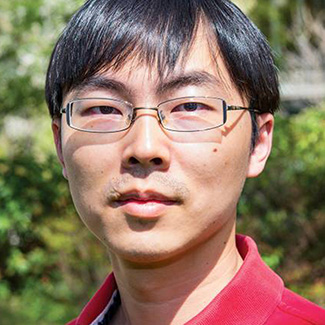
Shixin Liu, Ph.D.
BIOPHYSICAL CHARACTERIZATION OF THE VIRAL REPLICATION MACHINERY
Biophysicist Shixin Liu uses high-resolution biophysical tools to investigate the operating principles of key enzymes that govern the SARS-CoV-2 life cycle. He is collaborating with Tarun Kapoor to elucidate the mechanism by which the viral helicase unwinds its physiological nucleic acid substrates for replication. This investigation will pave the way for identifying specific and potent small molecules that inhibit the enzyme activity.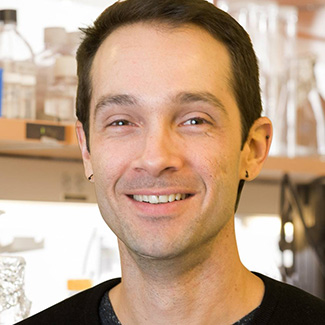
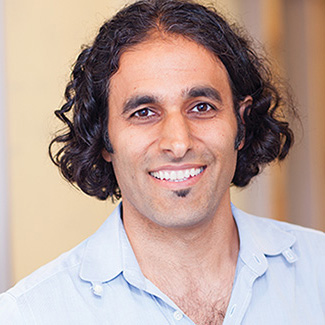
Daniel Mucida, Ph.D. and Sohail Tavazoie, M.D., Ph.D.
MUCOSAL IMMUNOGENETICS AND AN ORAL THERAPY FOR COVID-19
Immunologist Daniel Mucida and cancer biologist Sohail Tavazoie are studying the immunologic response to SARS-CoV-2 in the lungs and intestines. Though there has been limited focus on the interaction of the virus with the intestinal immune system, an in-depth understanding of the intestinal immune regulation of SARS-CoV-2 is essential for the development of effective therapeutics and vaccine strategies. Dr. Tavazoie’s lab has identified genes that regulate metastatic progression by impacting immunological response. Using mouse models, Drs. Mucida and Tavazoie will determine if specific genes regulate the ability to clear the virus, while evaluating innate and adaptive immunity, including mucosal T cell and antibody responses. The scientists will also test the ability of RGX-104, an experimental compound that enhances adaptive immunity, to suppress COVID-19 pathogenesis.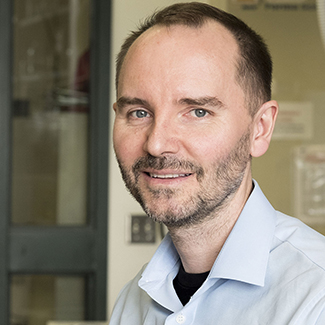
Marc Flajolet, Ph.D.
DNA-ENCODED LIBRARY (DEL) TECHNOLOGY AND DRUG DISCOVERY
Marc Flajolet and his colleagues in the Laboratory of Molecular and Cellular Neuroscience recently developed a DEL platform that will be used to identify small molecule compounds binding a number of SARS-CoV-2 structural and non-structural proteins. These targets are being produced and purified in the laboratory or in collaboration with virologists Paul Bieniasz and Theodora Hatziioannou. Hit compounds will be validated for their binding capacity and specificity. Specific lead compounds and coronavirus family broad compounds will be further investigated biologically in-house or in collaboration under the lead of virologist Charles Rice.

Sarah J. Schlesinger, M.D.
Sarah Schlesinger chairs the university's Institutional Review Board, which will review all COVID-19 projects involving human subjects to ensure that they follow ethical guidelines and federal regulations. Dr. Schlesinger was involved in clinical trials of 11 HIV vaccines and vaccine adjuvants.See all scientists heading research programs at The Rockefeller University>>